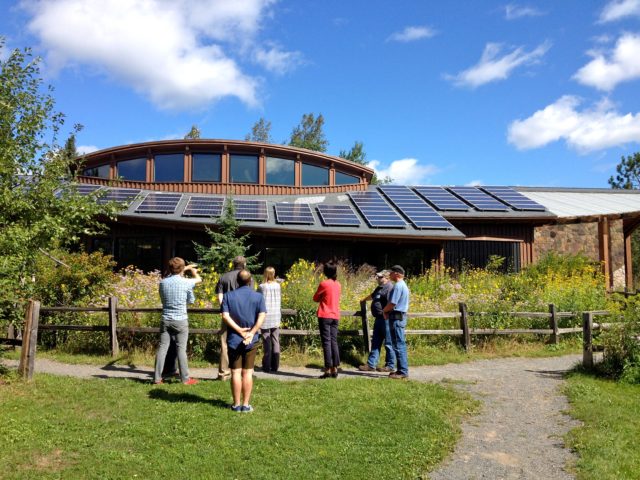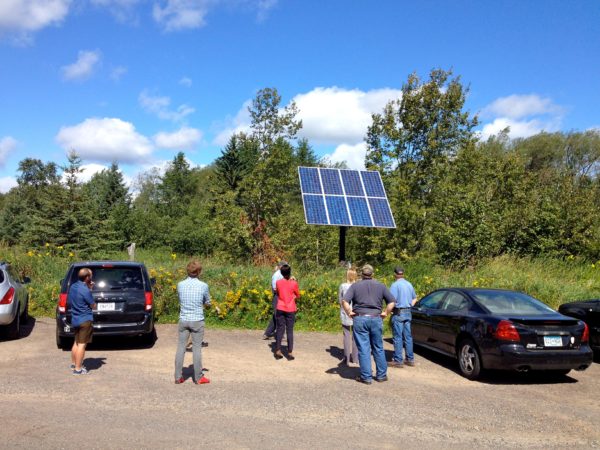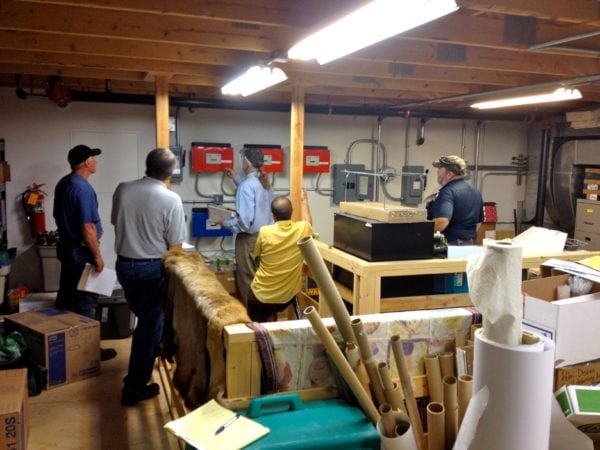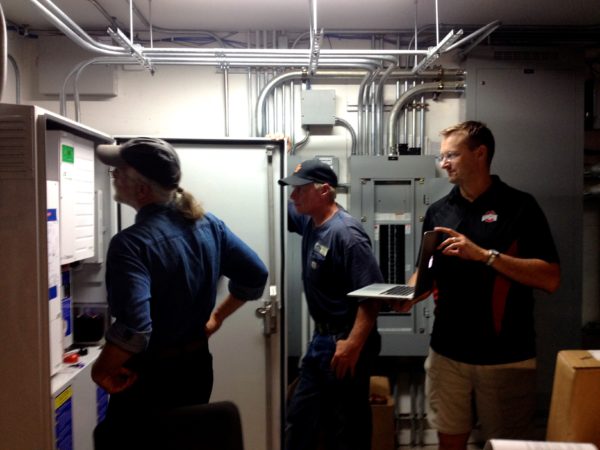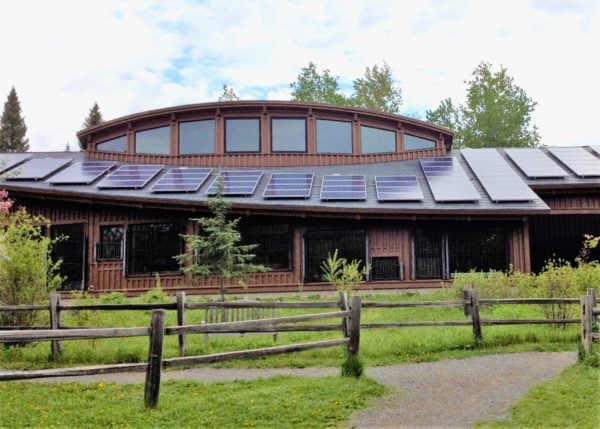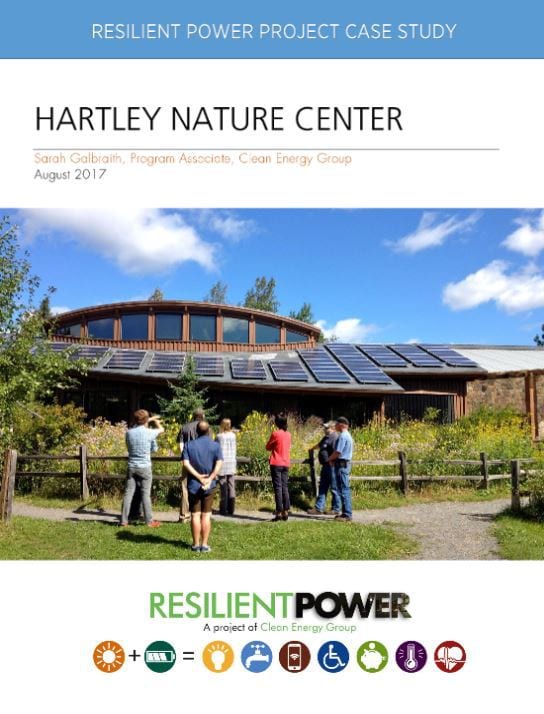Hartley Nature Center
The flood of June 2012 set many records in Duluth, MN, as 12 inches of rain pounded the area in just a few hours.
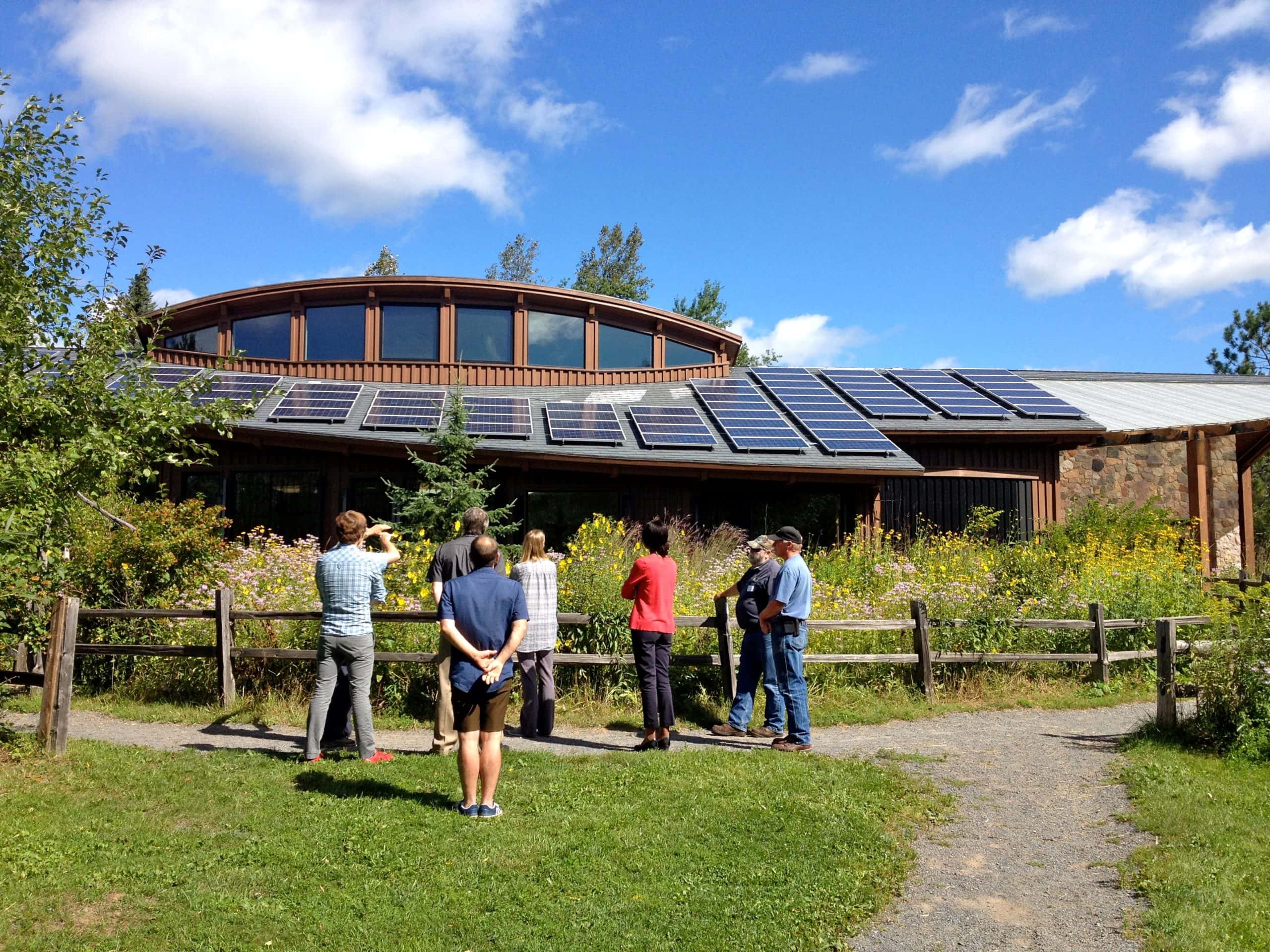
Hartley Nature Center. Photo courtesy of Ecolibrium3.
There was extensive damage to roadways, water treatment systems, homes, and businesses. But out of the devastation came a renewed interest to pursue resilient power systems, including a sustainable district energy system, community solar projects, and a solar+storage system to provide clean, reliable backup power at Hartley Nature Center (HNC), which is located on a city owned property.
More recently, a powerful summer storm knocked down trees and left many without power for several days in Duluth, including HNC. Six days after the storm, power was finally restored to the building that houses HNC’s classrooms, exhibits, library and other facilities; ironically, just two hours before the battery storage system was delivered for installation.
“It is the first extended community wide power outage in 10-15 years…everyone is thinking about backup differently,” said Bret Pence, a program specialist with Ecolibrium3, one of the partners in the solar+storage project at HNC. During the multi-day outage, HNC was forced to cancel a week of its summer camp programming, which is an important source of revenue for the nature center. The returned camp fees caused a loss of $14,000. “This changed the perceived value of the battery,” said Pence, “from one that was a cutting edge but expensive project to one that is a great capital improvement that provides a terrific insurance element.”
Before the latest storm hit, HNC had already planned to retrofit an existing solar power array to include energy storage. The extended summer outage underscored the value of and need for more resilient power systems. HNC has a net zero energy goal, and the City of Duluth was interested in reducing electricity costs at the center through managing utility demand charges, as well as the opportunity for public education and improved energy security. Solar+storage was a win-win solution. If the power from the grid goes down, the electricity from the solar array can power the building and charge the battery so that when the solar panels are not generating power, the batteries can provide needed electricity.
HNC had one of the first solar power arrays in northern Minnesota. Installed in 2003, the system is composed of an 11-kilowatt fixed array on the roof and a 2-kilowatt ground-mounted dual-axis tracker. With the original inverters beginning to fail, HNC decided to install an energy storage system along with new inverters in 2016. The addition of the batteries provide resiliency by allowing the solar+storage system to “island” from the grid during an outage and continue generating power independently. The installation also included a critical load subpanel and backup strategy designed to cover two situations, either supporting business functions during shorter outages (less than four hours) or supporting critical power needs during an extended outage to meet community needs in an emergency.
According to a statement from Sunverge, the company that supplied the battery system, “Storing power from the center’s solar panels, this installation will ensure vital Center operations never miss a beat, even when the grid goes down. The system will also allow the Center to serve as a community charging resource during times of disaster, keeping citizens connected with the people they need to contact.” In addition to sheltering nearby residents, the nature center will have the ability to serve as a base of operations for the city’s emergency response efforts.
The total project cost for the retrofit was about $45,000. The project was initially funded through a University of Minnesota Extension Regional Sustainable Development Partnership grant and received additional support from the Minnesota Power Foundation and in-kind donations of labor and planning from the City of Duluth. Clean Energy Group’s Resilient Power Project provided a grant to support project technical feasibility assessments and fund related educational classes on solar+storage technology. Additional contributions were made by the Izzak Walton League, Werner Electric, and the International Brotherhood of Electrical Workers.
HNC used the solar system retrofit as a learning opportunity for local electrical installers. A NABCEP Certified PV installer and ISPQ Certified Master Trainer from Great Northern Solar led a continuing education class consisting of four days of hands-on learning to install and commission the system. Class fees were then utilized to additionally assist in funding the project. Along with improved resiliency and ongoing public education, the City of Duluth intends to use this project as a demonstration model of solar+storage technologies. Success of the project could lead to more resilient solar+storage development throughout the city.
Photos
Click on the photos below to view full size with captions.
Installation Details
Year Commissioned
2016
Services Provided
Renewables integration, reduced demand charges, backup power
Supported Infrastructure
Emergency community shelter and base of operations for the city’s emergency response efforts.
Solar
13 kW
Storage
6 kW / 14.2 kWh lithium-ion battery
Project Partners
University of Minnesota-Duluth, Ecolibrium3, City of Duluth, Hartley Nature Center, Great Northern Solar, Lake Superior College, and Clean Energy Group
Associated Webinar
Resilient Power Retrofit - How a Minnesota Nature Center Became a Solar+Storage Community Shelter (October 2016)
Associated Blog
Resilient Solar+Storage at Nature Center Improves Community and Economic Security (September 2016)





